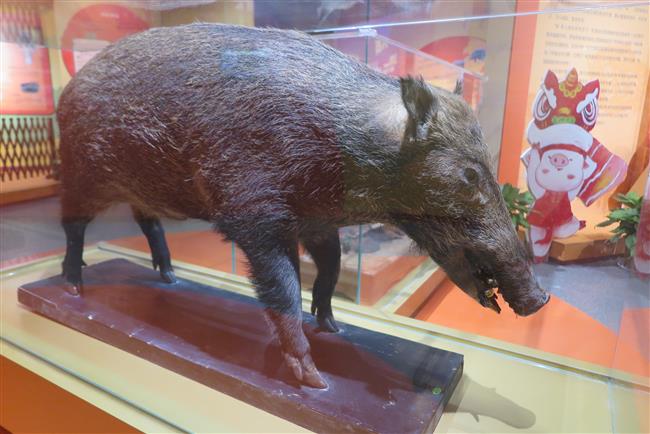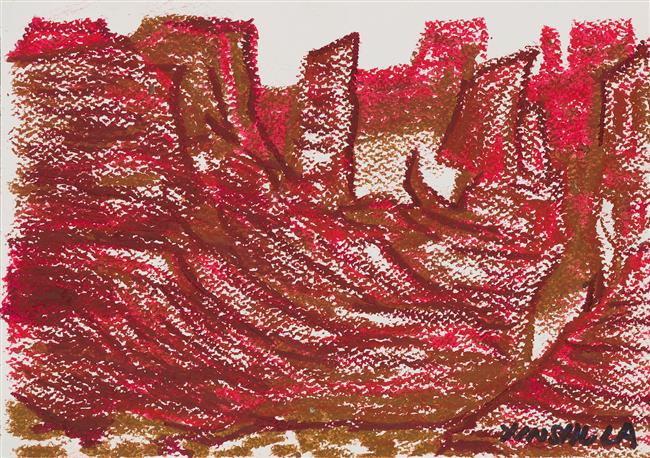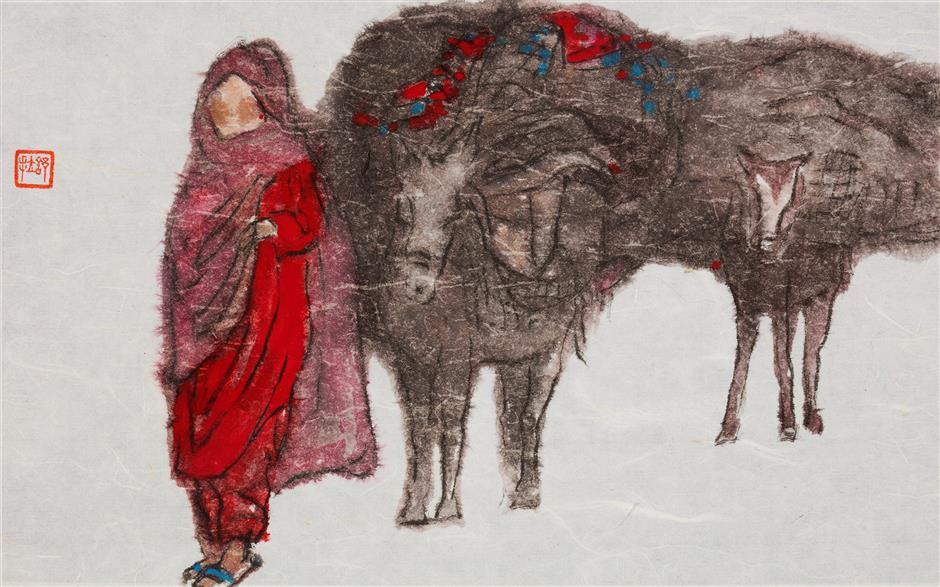Pigs and frontier life at Hangzhou museums
To mark the Year of the Pig, an exhibition at Zhejiang Nature Museum includes specimens and historical documents relating to the animal.
Pigs play an indispensible role in Chinese agriculture. The Chinese character for home, 家, is made up of two parts — the upper part means roof and the lower part is the ancient character for pig. That reflects the importance of the pig in Chinese culture and history.
The exhibition shows how the Chinese character for pig, 猪,evolved in history. From oracle bone script to the latest historical archives, the character changed along with different periods and writing systems.

A specimen of pig is on show at Zhejiang Nature Museum.
The ancient Chinese began to tame pigs as long as 7,500 years ago. Northern China is considered to be the first pig-breeding location in the country. In the cities of Baoji and Huaxian counties in Shaanxi Province, bones of domesticated pigs have been unearthed from relic sites.
Zhejiang ancestors started to domesticate pigs about 4,000 to 5,000 years ago. At the Hemudu Neolithic Site in eastern Zhejiang Province, archeologists have excavated a number of pig bones, showing that ancient people had raised pigs on a large scale.
Artisans began to integrate pigs with handicrafts. A burial object designed in the shape of a sty and circled with pigs was unearthed from a Han Dynasty (206 BC-AD 220) grave in Changsha, Hunan Province.
Domesticated pigs in China have developed into seven types according to appearance and habits. In the south of the lower reaches of the Yangtze River, the most common variety is the Jianghuai type, which is typified by Taihu Lake pigs and Xinjin pigs.
Jinhua pigs, which belong to the Huazhong variety, feature white bodies and black heads and tails. The best-quality Jinhua ham is made of the meat from these pigs. The ham is prized for its golden skin, rose-like flesh and pure white fat. Some say it represents the golden standard of Chinese dry-cured hams. Some rare species of pigs can only be found in China. However, some are endangered due to illegal hunting and the destruction of their habitat. The exhibition lists the endangered varieties.
To cater for children, the museum displays pig-themed toys and a number of picture books themed on pigs, including the popular Peppa Pig.

Yin Shula’s works
Besides the pig theme show, art lovers have other options.
Zhejiang Art Museum has a display of paintings by Yin Shula, a Zhejiang painter who once worked in the museum and donated 30 of his works.
Yin’s paintings are themed on the frontier region in China, including the Xinjiang Uygur Autonomous Region, Tibet Autonomous Region, and Qinghai and Yunnan provinces. He spent years traveling across these areas and created a myriad of works depicting the lifestyles and the landscape.
The exhibition is in three sections, — Silk Road, Kekexili and Love Song — containing 145 watercolor and oil paintings and even pictures made on an iPad. Visitors could learn about ethnic minorities’ lifestyles and their living environment from the exhibits.
Yin’s ancestors originally came from Xinjiang. That factor drove him to travel extensively throughout the region. The “Silk Road” part of the exhibition mainly showcases works about the area.
Yin used the special texture and crude colors of chalk, crayons and oil painting sticks to reflect the rugged landform of Xinjiang. Taklimakan Desert and the dried riverbed of the Tarim River take on a rough vigor under his brush.
Yin drove across Kekexili in 2012. The rimless Gobi Desert, rolling mountains and snow-capped plateau were an inspiration. In this isolated region, people and wild animals live in harmony.
Yin found the frontier region to be poetic and full of romance. He used traditional rice paper to present flowers, creeks, clouds, breeze, songs and Buddhist scriptures. These works form the third part of the exhibition — Love Song.
• Pig exhibition
Date: Through April 5, closed on Mondays
Address: No. 6, West Lake Cultural Square
Admission: Free
• Yin Shula exhibition
Date: Through April 7, closed on Mondays
Address: 138 Nanshan Rd
Admission: Free

Yin Shula’s works
















